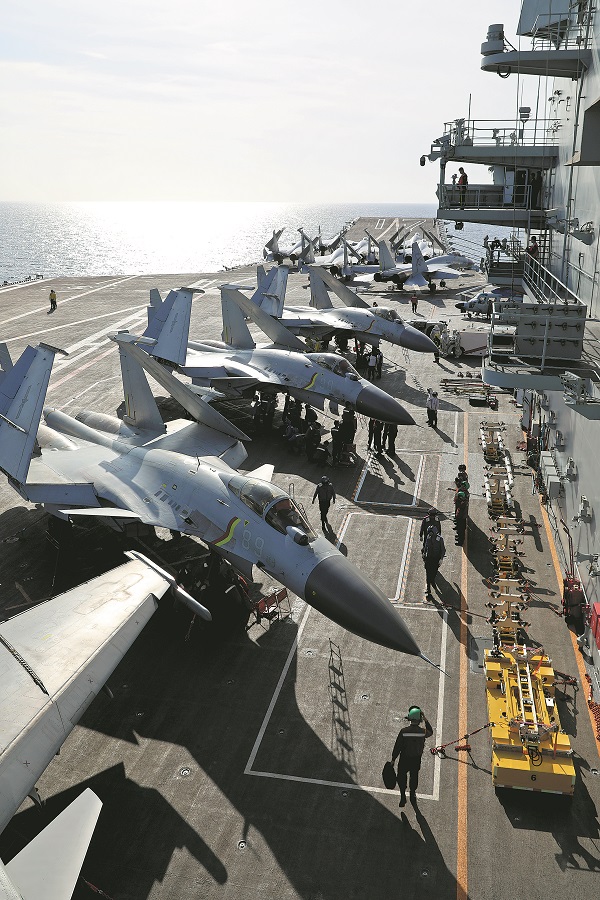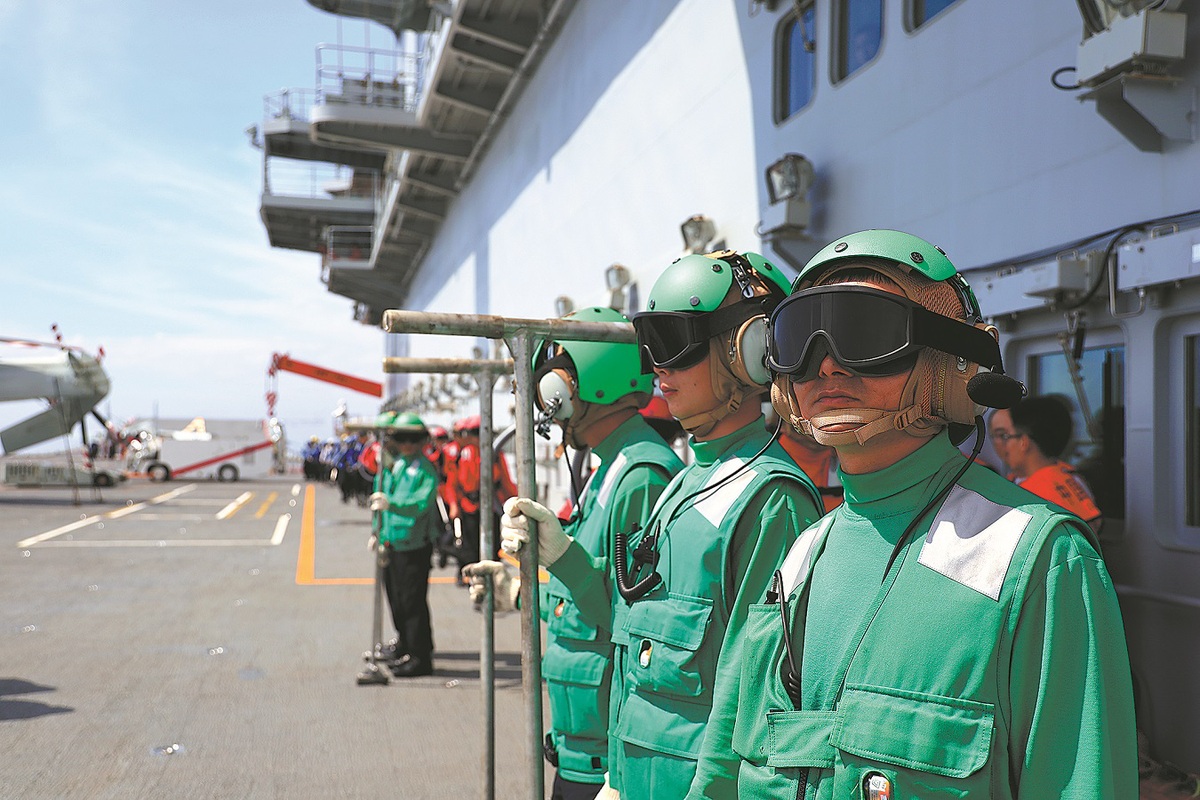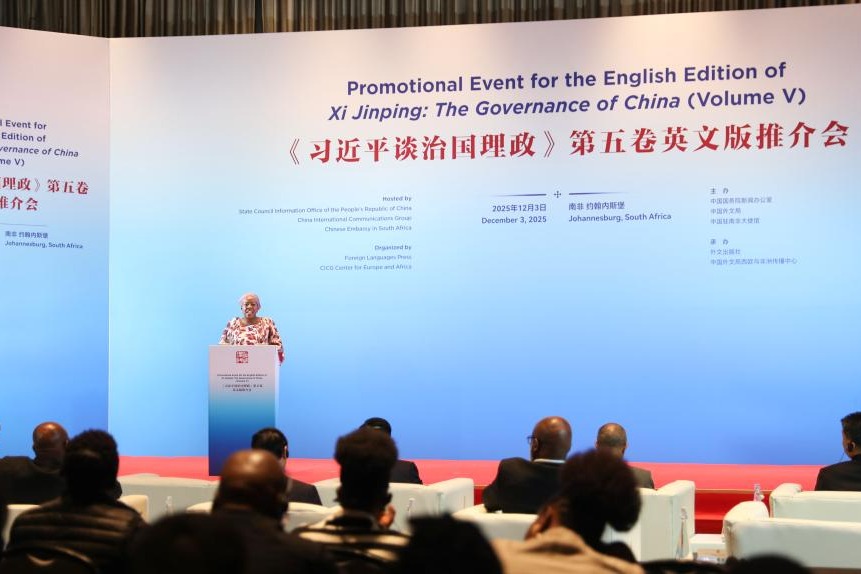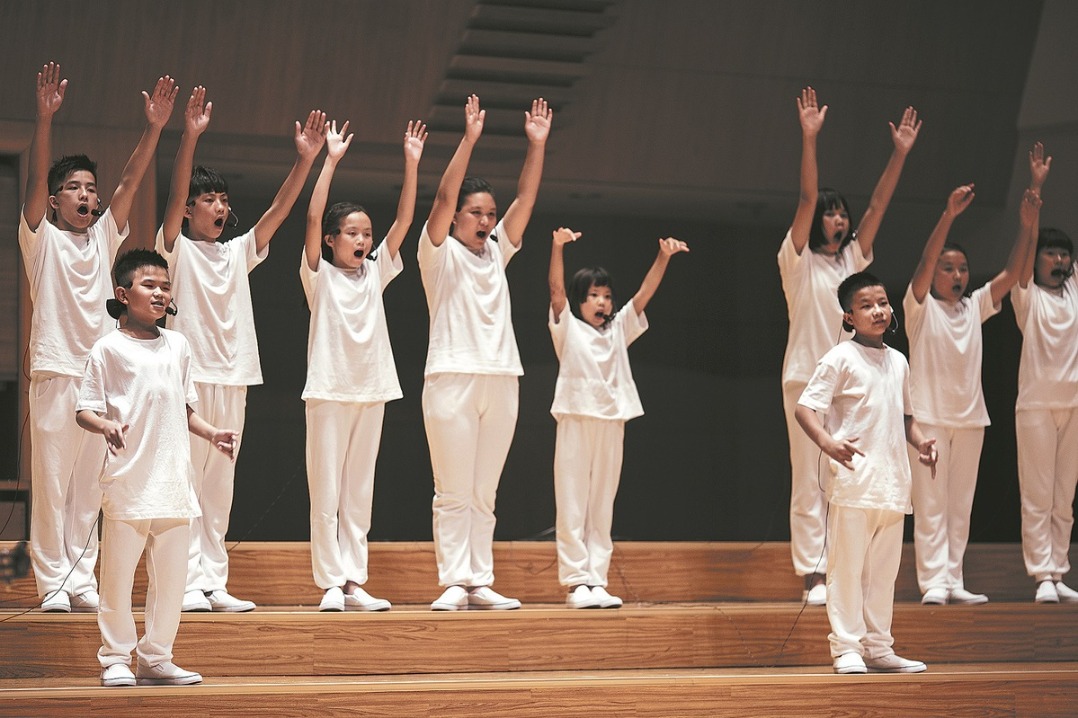Meet the men who give nation's aircraft carriers a cutting edge
Dedicated team ensures maritime forces, jet fighters ready for rapid deployment


Speed is essential
Guiding and driving a large jet on a flight deck is never easy, Zhou said.
"The pilot mustn't taxi his plane in the same way he does on a conventional runway as the deck area is very limited and is often packed with jets and other equipment," he explained.
"Instead, he needs to take it as slowly as possible at some points, and he sometimes needs to make a rapid turn so he can move the jet to a designated site. That means the aviator must work closely with my people, and most importantly, follow their hand signals," Zhou explained.
Smooth cooperation is the goal of naval aviators and their comrades on the flight deck, he emphasized.
"Before each voyage, the fighter jet unit invites the launch crew to their air base to work with pilots on trial runs so the aviators can get familiar with every deck procedure before the launch of their jet," he said.
"During carrier exercises and combat deployment at sea, the J-15 aviators sit with us and other air operations crews to review and discuss procedures and make necessary preparations. After they return from a flight, some of them ask for our views and suggestions about their deck maneuvers," Zhou said.
His unit has also invited pilots to share knowledge about the J-15 fighter. "Their sharing has enabled us to better understand the jet and helped us improve our work," he said.
For their part, the launch crew must always execute each and every step accurately, which means repetitive training and flawless collaboration, the officer added.

Zhou said his commanding officer, Lieutenant Commander Ren Chi, often tells the launch team members and recovery support sections they must keep honing their skills and be ready to respond to orders rapidly and effectively.
"All of us know that the more fighters we can launch when engaging with the enemy, the likelier it is we can win the battle," Zhou stressed.
He has led thousands of rehearsals of pre-launch maneuvers and spared no effort to improve the personnel's positioning, movement and hand signals.
"We can launch and recover far more fighter jets than before, and that means our carrier strike group now has greater air fighting strength," Zhou said. During the recent exercise with the Liaoning in the Western Pacific, the J-15 fighters were used almost every day, and his men were very busy, he said.
Lieutenant Junior Grade Gao Xiang is a member of Zhou's team and one of the "shooters" who are positioned beside a jet to signal the pilot when to take off.
"We practice each move tens of thousands of times until it becomes part of our muscle memory. Moreover, we gather experience, analyze data collected from training exercises and actual operations, and brainstorm and explore better procedures and maneuvers," Gao said.
"For instance, in the past, some of the deck operations were done one by one. After our research and trials, they are now conducted simultaneously, tremendously streamlining the launch process and reducing waiting time between takeoffs," Gao said, adding more fighters can be launched in the same period of time.
























